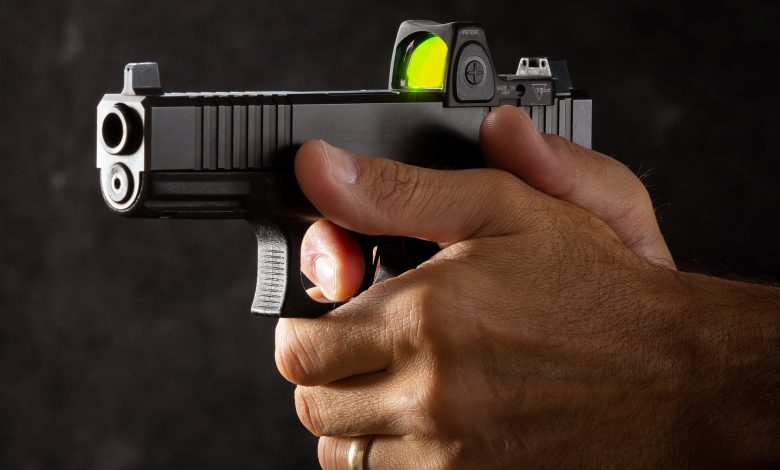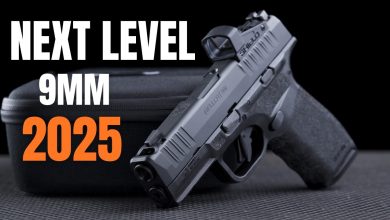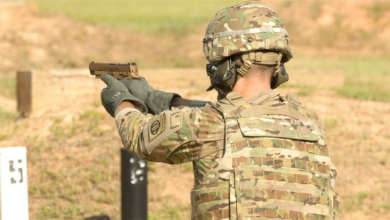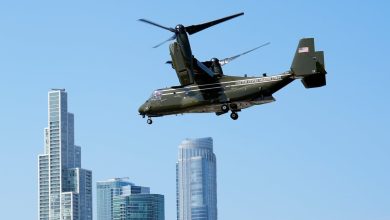The Precise Trigger Press

What would it take to hit a 2-inch dot on a paper target with five rounds, from the holster, at the 25-yard line in a compressed timeframe – say less than five seconds? Regardless of skill level, it would minimally require a considerably good hold with a precise trigger press.
Compare that 2-inch dot at 25 yards to a large (18×18 inch) piece of steel at the 10-yard line. Comparatively, dumping five rounds within a compressed time frame into a target that big and that close wouldn’t require the same precise press. These are two different trigger presses, as they are two different shooting solutions. Target size determines your accuracy demand, which is the first in a series of contributing factors to making a precise trigger press.
When calculating the optimal shooting solution for the target presented, there are multiple considerations. One is the position of your finger. Is it outside, inside or touching the trigger guard. If your trigger finger is inside the trigger guard, then is it completely off the trigger, lightly touching the trigger, in the process of taking up trigger slack, just starting at the wall, pressing through the wall, breaking the shot, traveling to the rear of the trigger guard past the breakpoint, is it riding reset, etc.?
Trigger Warning
Another consideration is the position of the trigger itself. If it’s a pistol there can be as many as nine distinctly different trigger positions based on the make, model and any modifications. The nine trigger positions of a handgun are generically identified as:
- At rest: there is no external forces exerted
- Slack: the front-end take-up
- Wall: where you start to feel a buildup of resistance
- Creep: as you are pressing through the wall
- Break:where the sear is released causing the hammer or striker to send the shot
- Overtravel: the trigger movement past break
- Pin: stopped at the rear of the trigger guard
- Reverse travel: the trigger has now changed direction and instead of moving to the rear of the trigger guard is now moving to the front of the trigger guard
- Reset: where the cycle of action begins again
Multiple positions of the finger and of the trigger in both directions comprise a complex matrix of trigger and finger position variables, all of which must be accounted for throughout delivery of the five rounds on target.
During the delivery process the shooter must maintain unwavering mental and visual focus while calculating the amount of precision needed to manage the finger-trigger matrix components. In addition to all the above, the shooter is cognizant of not altering grip pressure with the hands or changing structural support position with the upper body. Any changes to either structure or grip will introduce foreign input, which will affect round placement.
Yet another consideration is the speed of the trigger press. Controlling the steadiness, consistency and rate of trigger pressure are contributing factors to the overall shooting process when it comes to a precise press. Given the compressed time requirement (sub five seconds) trigger movement forward will need to be at least the same or faster than trigger movement to the rear of the trigger guard. If there is such a term as “compressed precision” it would translate to optimal control of each of these components: trigger-finger position, trigger position, trigger direction and trigger speed, affording you greater control of the overall press to produce the desired results.
Mastering The Mind Game
In addition, most shooters don’t really consider how much the mental process contributes to optimal fire control. If you are connected to the gun and the shooting process mentally, you can build the shot earlier. The only way you can build the shot earlier is if you get yourself there earlier mentally. Getting there mentally sooner allows you to prep the trigger earlier, establish stability earlier and acquire alignment earlier–-all of which contribute to building the shot earlier.
The mental process additionally affords you control of your timing. When you break the shot is equally as important as how you break the shot. Aside from the usual recoil control considerations such as rise, recovery and realignment, it’s necessary to contend with the sequential timing of each of the above subcomponents. If you aren’t there mentally then your timing is the first thing to go. Timing gives you control of exactly when you want the round to break and where you want the trigger to be in the cycle of prepping for the next break.
Given this complexity of contributing factors, to calculate how precise the press needs to be under duress of set time and accuracy demands, means that you don’t have the luxury of thinking about any of it. A precise press is best delivered by those who can subconsciously control each of the matrix elements. The greater the control of each of the subcomponents of the press the greater your overall fire control.
Read the full article here







